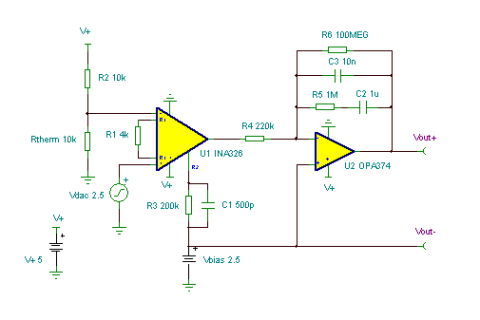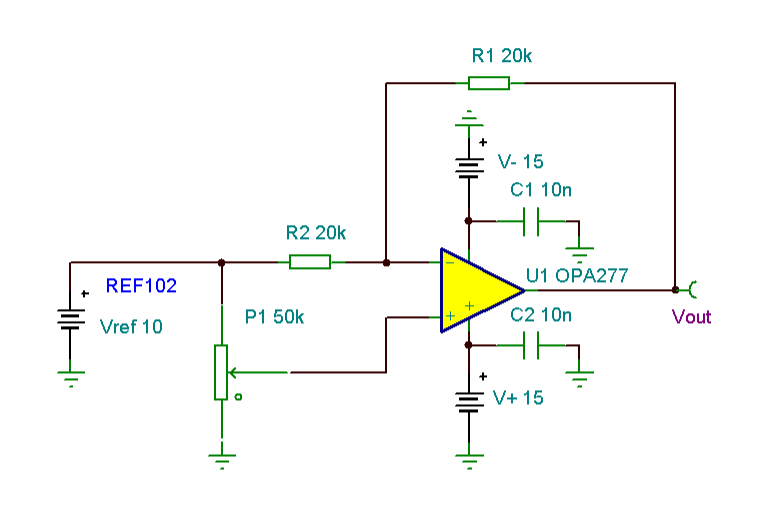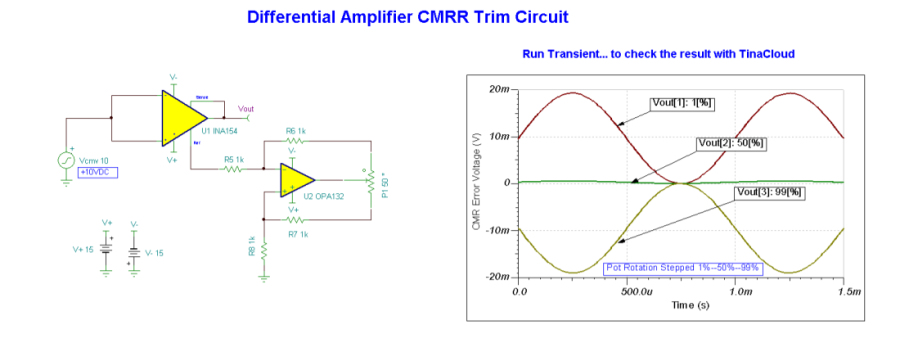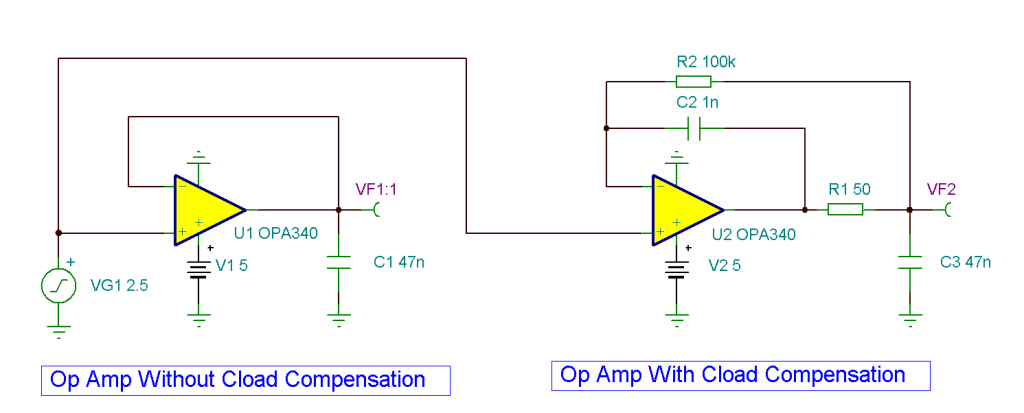This current shunt monitor circuit allows a current measurement to be made by measuring the voltage drop across a shunt resistor in the “high side” of a power supply. The INA193 is capable of operating with a common- mode voltage of up to +80V and its CMV range is not a function of
its supply voltage. The INA193 provides a differential voltage gain of 20V/V and its recommended full- scale input voltage is 100mV. An INA194 provides a gain of 50V/V and an INA195 provides a gain of 100V/V. R1 & R2 together with C2, C3, & C4 provide differential and common-mode filtering and are recommended for switching power supplies. The two resistors should be carefully matched (1% tolerance) as well as capacitors C3 & C4 (5% or better tolerance). Resistors of 100 ohms will give a gain error of slightly under 2%. (Circuit is created by Neil P. Albaugh, TI – Tucson)
Current Shunt Amplifier circuit:
Online Simulation of the Current Shunt Amplifier Circuit
The great feature of the TINA circuit simulator that you can analyze this circuit immediately with TINACloud the online version of TINA. Of course you can also run this circuit in the off-line version of TINA.
Click here to invoke TINACloud and analyze the circuit yourself, or watch our tutorial video!
You can send this link to any TINACloud customers and they can immediatelly load it by a single click and then run using TINACloud.
Michael Koltai
www.tina.com





